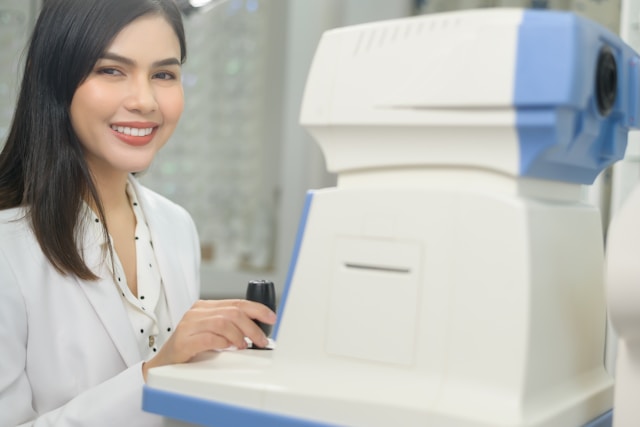What are soft tissue disorders?
Have you ever wondered how repetitive movements, poor postures, or acute injuries affect your body's muscles, tendons, and ligaments? Soft tissue disorders encompass a range of conditions affecting these components, often leading to discomfort, pain, and diminished functionality. These disorders can stem from a variety of causes, including overuse injuries, trauma, and conditions that place undue stress on the musculoskeletal system.
The Active Release Technique (ART), administered by an ART-certified provider, offers a targeted treatment system designed to alleviate these issues by breaking down scar tissue, restoring normal tissue function, and relieving pain through specific patient movements.
Common symptoms of soft tissue disorders
Soft tissue disorders manifest through various symptoms, challenging healthcare professionals to diagnose and treat them effectively. Here are five common symptoms:
- Pain and tenderness: Affected areas may feel sore to the touch, with the pain worsening during activity.
- Swelling: Inflammation is a common response to injury, leading to swollen tissues around the affected area.
- Reduced range of motion: Scar tissue and inflammation can restrict movement, making it difficult to perform everyday tasks.
- Weakness: Overuse injuries can lead to muscle weakness, affecting the overall functionality of the limb.
- Numbness or tingling: Conditions like carpal tunnel syndrome may cause a sensation of pins and needles or a loss of sensation due to nerve compression.
Examples of soft tissue injuries
Soft tissue injuries are varied, affecting different parts of the body. Here are five examples:
- Carpal tunnel syndrome: A condition exacerbated by repetitive strain injuries, leading to numbness and tingling in the hand and arm.
- Tennis elbow: Caused by overuse, resulting in pain around the outside of the elbow due to damaged tendons.
- Plantar fasciitis: Inflammation of the tissue at the bottom of the foot, causing heel pain.
- Achilles tendinitis: Inflammation of the Achilles tendon, typically due to repetitive stress to the area.
- Rotator cuff tendinitis: Inflammation of the shoulder tendons, often from repetitive overhead activities.
ART treatments stand out for their efficacy in treating soft tissue injuries. By engaging in an ART session, physical therapists can target dense scar tissue and facilitate the healing process through ART treatment tailored to the patient's condition and needs.
This active release technique aims to relieve pain and restore the full range of motion, addressing the root cause of soft tissue conditions and overuse injuries.
What are active release techniques?
Active Release Techniques (ART) are a cutting-edge, non-invasive treatment method designed to alleviate pain, improve mobility, and address a range of soft tissue disorders. By employing precise, targeted movements and manual therapy, ART breaks down scar tissue, restores normal blood flow, and facilitates overused muscles' healing.
This approach is particularly effective in treating restricted movement, sharp pain, and connective tissue dysfunctions, making it a valuable tool for healthcare professionals, including medical doctors, chiropractors, and massage therapists. ART is not just about treating pain; it's about correcting the underlying issues causing pain, such as abnormal tissues and soft tissue dysfunctions, to support overall muscle health and reduce pain.
Who developed these techniques?
The development of Active Release Techniques is credited to Dr. P. Michael Leahy, a chiropractor who observed that his patient's symptoms seemed to be related to changes in their soft tissue that could be felt by hand. By the early 1980s, Dr. Leahy had fully developed ART as a unique treatment system that combines patient movement with precise pressure applied by the therapist.
His methods quickly gained popularity among healthcare professionals for their effectiveness in treating various physical disorders, from sports injuries to repetitive motion injuries like carpal tunnel syndrome. The techniques are particularly acclaimed for effectively treating pain and improving conditions that traditional treatments often struggle with, such as neck pain, joint pain, shin splints, and other symptoms associated with soft tissue dysfunctions.
Today, ART is supported by scientific evidence, including pilot studies documenting its effectiveness, and is widely recognized as a pivotal development in chiropractic care and myofascial release treatments. (Drover, J. M., Forand, D. R., & Herzog, W., 2004.)
8 examples of Active Release Techniques
Active Release Techniques (ART) represent a revolutionary approach in physical therapy, focusing on the targeted manipulation of soft tissues to alleviate pain, restore range of motion, and facilitate faster healing.
Developed by Dr. Michael Leahy, ART combines patient-specific movements with precise manual pressure applied to affected areas, effectively treating various musculoskeletal conditions by breaking down scar tissue, enhancing blood flow, and resolving restrictions that cause pain and limit motion.
Spinal ART
It targets neck pain and back pain by addressing the muscles, tendons, and nerves along the spine. This technique is crucial for patients with a history of back issues, aiming to increase mobility and decrease discomfort after just the first session.
Upper extremity ART
Focuses on the shoulders, arms, and hands, which is particularly beneficial for patients with carpal tunnel syndrome or shoulder tendinitis. Breaking down scar tissue that builds up in these areas restores function and reduces symptoms of pain and stiffness.
Lower extremity ART
They are used for treating injuries related to muscles and tendons in the legs, such as shin splints or Achilles tendinitis. This method improves blood flow to the affected regions, promoting a quicker recovery and alleviating symptoms like pain and restricted movement.
Nerve entrapment ART
They are specifically designed to release nerves trapped by surrounding tissues, which can cause sharp pain and other symptoms. This technique is an effective treatment for conditions where nerves are compressed by scar tissue, leading to reduced pain and improved function.
Graston technique integration
While not a traditional ART method, the Graston Technique is often used in conjunction with ART to detect and treat areas with scar tissue. Healthcare providers can use specialized instruments to break down fibrous tissue more effectively, complementing the ART treatment for enhanced results.
Myofascial release ART
It focuses on releasing tension in the fascia—the connective tissue surrounding muscles—thus improving motion and flexibility. This is particularly important for patients whose symptoms include tightness and restricted movement, offering relief and promoting healing.
Repetitive strain injury ART
Tailored for injuries caused by repetitive motion, such as typing or assembly line work. By addressing the overused muscles, tendons, and nerves, ART helps to alleviate the cycle of inflammation and scar tissue build-up, leading to significant improvements in symptoms and function.
Sports performance ART
Aimed at athletes and individuals with sports injuries, this technique enhances performance by restoring muscular balance and flexibility. An ART-certified provider assesses the patient's body and injury during the first visit to customize the treatment, focusing on critical areas for the athlete's sport, leading to faster recovery and improved athletic performance.
Each of these examples of Active Release Techniques highlights the versatility and effectiveness of ART in treating a wide range of conditions. By considering the patient's unique medical history and symptoms, ART-certified healthcare providers can deliver personalized treatments that support the body's natural healing processes, leading to faster healing and a quicker return to daily activities or sports.
Benefits of practicing active release techniques
Active Release Techniques (ART) offer a dynamic approach to treating soft tissue injuries, combining the expertise of healthcare professionals with targeted manual therapy to treat a wide range of conditions effectively. By focusing on each patient's needs, ART provides a tailored treatment session that addresses the root causes of pain and dysfunction, promoting optimal healing and recovery.
- Reduces pain and discomfort: ART targets the accumulation of scar tissue that builds up in muscles and soft tissues, which can cause pain and limit movement. By breaking down this scar tissue, ART helps to alleviate discomfort and restore normal function, making it an effective treatment for conditions like carpal tunnel syndrome and chronic neck pain.
- Improves range of motion and flexibility: ART supports muscles and joints in regaining their natural movement by manipulating soft tissues. This benefit is crucial for patients suffering from repetitive strain injuries or limited activities due to tightness or restricted motion.
- Accelerates recovery: The focused approach of ART in treating affected areas promotes faster healing by increasing blood flow to the injured tissues. This enhanced circulation helps to reduce the treatment period necessary for recovery, allowing patients to return to their daily activities or sports more quickly.
- Prevents future injuries: By addressing the underlying issues contributing to soft tissue injuries, such as imbalances and weaknesses, ART helps support the body's natural structures and prevent future injuries. This proactive benefit is especially important for athletes and individuals with active lifestyles.
- Complements other treatments: ART can be effectively integrated with other treatments and techniques, such as the Graston Technique or traditional massage therapy. This versatility allows healthcare professionals to provide a comprehensive treatment plan that addresses all aspects of a patient's condition, offering a holistic approach to recovery.
The benefits of Active Release Techniques extend beyond the treatment session, offering long-term solutions for pain management, mobility, and overall wellness. By visiting an ART-certified healthcare professional, patients can explore how this innovative treatment can be tailored to meet their individual needs, as detailed on the official ART website and through consultations with trained practitioners.
Why use Carepatron as your physical therapy software?
Using Carepatron as your physical therapy software offers a comprehensive solution that streamlines administrative tasks, enhances patient engagement, and improves treatment outcomes. Its intuitive design simplifies scheduling, documentation, and billing processes, allowing therapists to focus more on patient care rather than paperwork.
Moreover, with features like secure messaging, telehealth options, and customizable treatment plans, Carepatron supports a holistic approach to patient management, fostering better communication and more personalized care.
References
Drover, J. M., Forand, D. R., & Herzog, W. (2004). Influence of Active Release Technique on Quadriceps Inhibition and Strength: A Pilot Study. Journal of Manipulative and Physiological Therapeutics, 27(6), 408–413. https://doi.org/10.1016/j.jmpt.2004.05.006




.webp)

.webp)
.webp)



.jpg)

.jpg)

.jpg)
.jpg)
.jpg)




.jpg)






